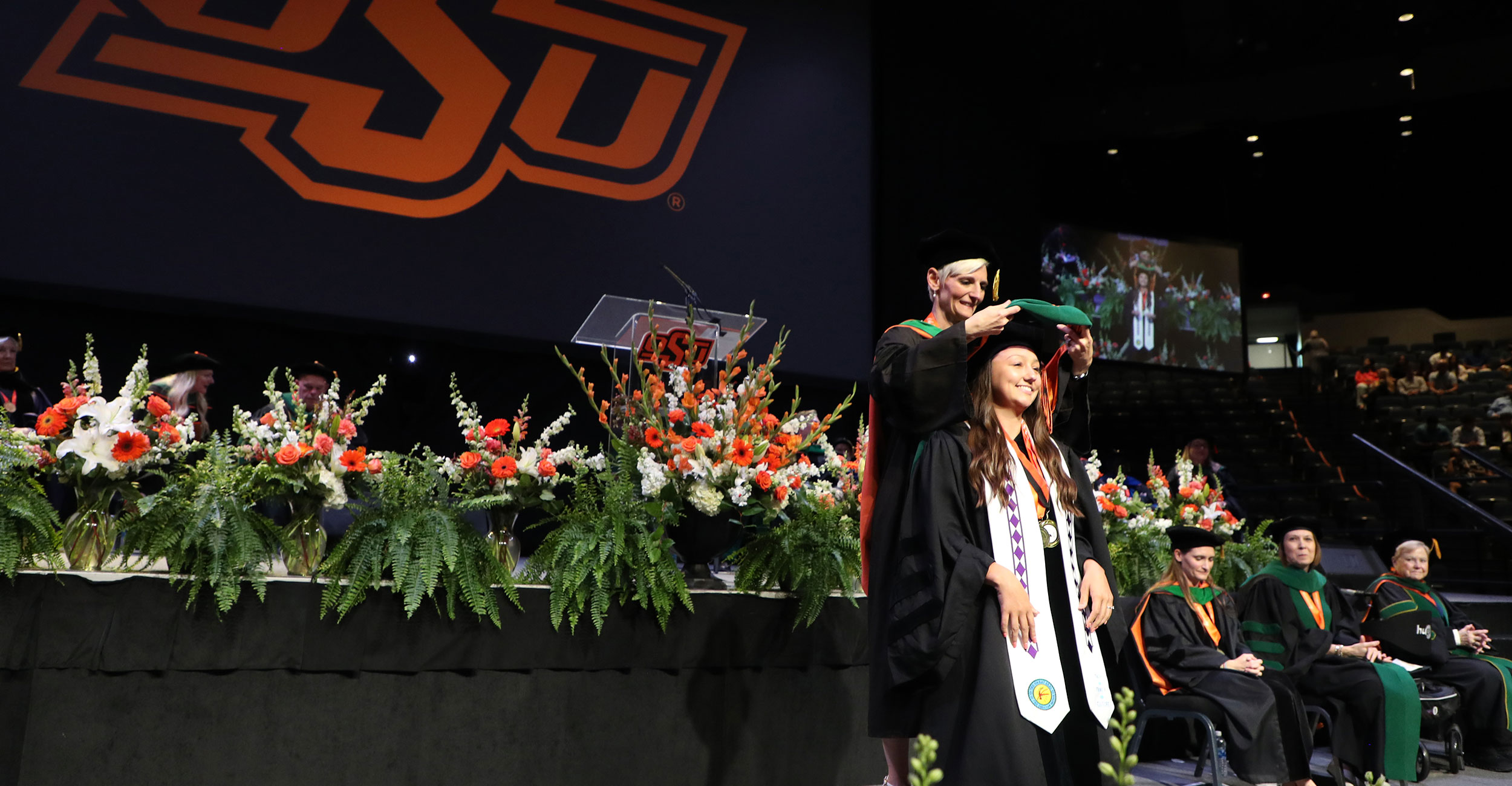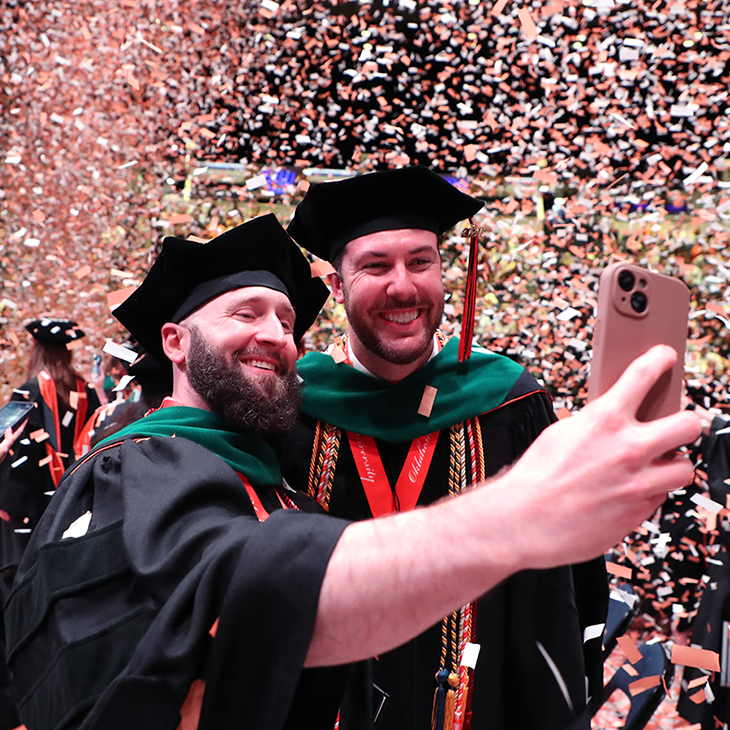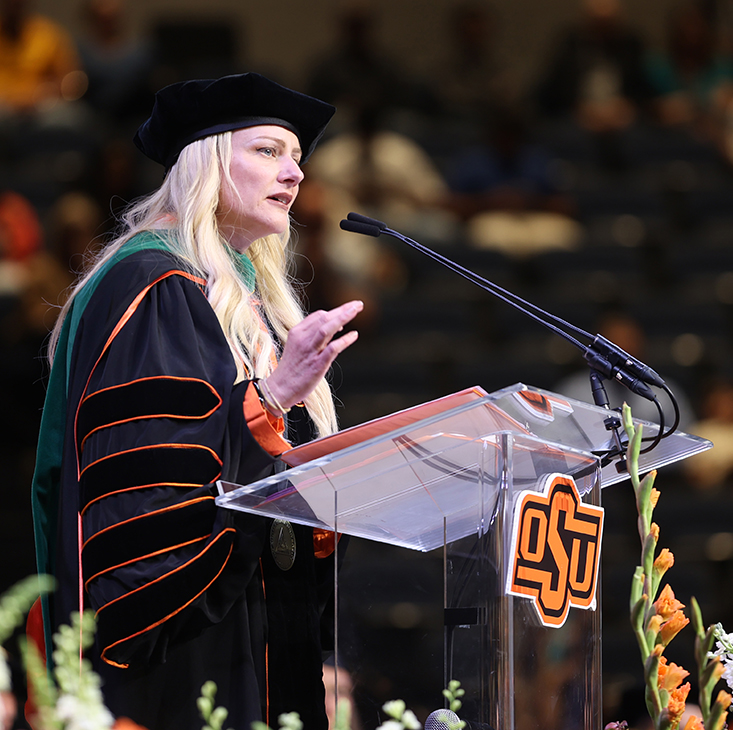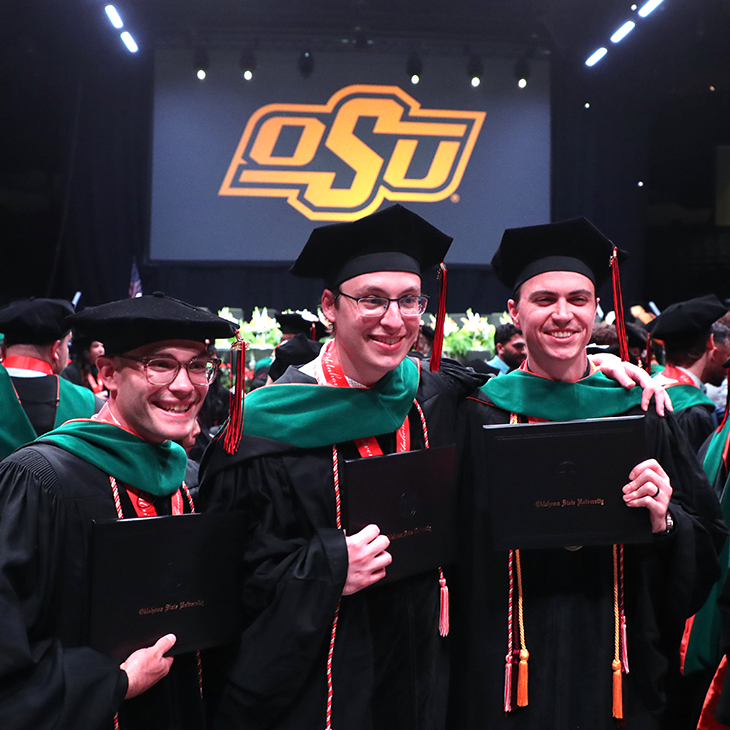
Historic inaugural class graduates from OSU College of Osteopathic Medicine at the Cherokee Nation
Friday, May 17, 2024
Media Contact: Sara Plummer | Communications Coordinator | 918-561-1282 | sara.plummer@okstate.edu
Oklahoma State University College of Osteopathic Medicine at the Cherokee Nation celebrated a monumental achievement May 16 as its inaugural class of 46 medical students graduated from the country’s first tribally affiliated medical school.
The commencement ceremony, which graduated students from OSU College of Osteopathic Medicine and OSU-COM at the Cherokee Nation, was held at the Mabee Center in Tulsa.
“Tonight, we celebrate the realization of a dream, one that started over a decade ago when I served as president of OSU Center for Health Sciences,” said Dr. Kayse Shrum, OSU president. “We wanted to expand our efforts to better the health outcomes of rural Oklahomans while also growing the medical school.”
Approximately 20% of the inaugural class are Native American. It’s a substantial number compared to the less than 1% of Native American students enrolled in medical schools nationally. About 35% of the students from the inaugural class from OSU-COM at the Cherokee Nation matched with a rural or tribal residency program.
Cherokee Nation Principal Chief Chuck Hoskin Jr. said as the tribe celebrates this historic milestone, they also honor the resiliency of their ancestors.
“Today, their legacy lives on as this exceptional group of future doctors prepares to break barriers and forge new paths in health care,” Hoskin said. “Their dedication not only addresses the critical shortage of rural doctors but also increases the representation of Native and Cherokee physicians within our health system and other tribal health systems in this state, ensuring top-notch care rooted in culture for generations to come.”
With health outcomes in Oklahoma ranking near the bottom nationwide, training physicians who will someday care for rural and underserved Oklahomans is a key mission of OSU-CHS.
“Their journey has been one of dedication, perseverance and cultural understanding. As they embark on their careers, they will carry with them the unique perspective and knowledge gained from this groundbreaking partnership.”
“These graduates, who have completed their training in the heart of the Cherokee Nation, embody the values of service, compassion and excellence that define both the Cherokee Nation and Oklahoma State University,” OSU-CHS President Johnny Stephens said. “Their journey has been one of dedication, perseverance and cultural understanding. As they embark on their careers, they will carry with them the unique perspective and knowledge gained from this groundbreaking partnership.”
In August 2020, the inaugural class didn’t just make history by being the first students attending a tribally affiliated medical school, they also started classes in the middle of a global pandemic.
“The first semester of medical school is difficult. Compound the stress of moving, forming new relationships, learning a high volume of complex information during a global pandemic, and you begin to understand the challenges faced by the class of 2024,” said Dr. Natasha Bray, OSU-COM at the Cherokee Nation dean. “The class of 2024 demonstrated resilience and leadership. They developed deep friendships and a culture of support both in the learning environment and the community. They developed a deep, and I hope enduring, appreciation of the role of physician in service.”
Ashton Glover-Gatewood, an enrolled member of the Choctaw Nation and descendent of the Chickasaw and Cherokee nations of Oklahoma, was working as a nurse and health care administrator at the Oklahoma City Indian Clinic when she applied to be part of the first class of medical students on the new Tahlequah campus.
“We’ve been through a lot as a class. I think we had a unique set of challenges, but we really grew together; we uplifted each other, and we helped each other,” Gatewood said. “I also feel a responsibility to represent my tribe. I hope that my story can inspire others to continue pursuing their dreams, especially Native students and women who may not have many mentors in their communities.”



